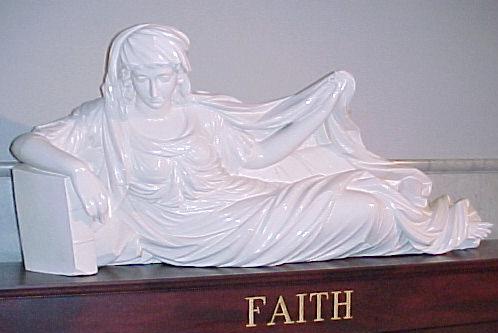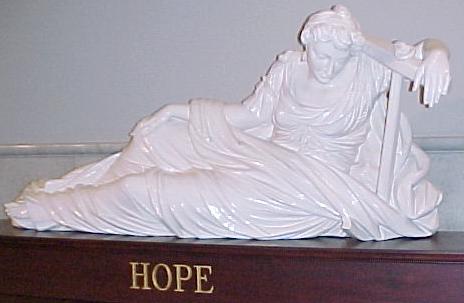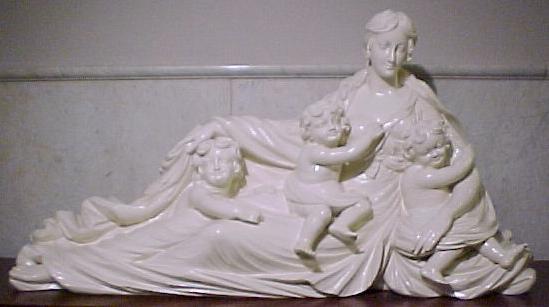Sermon delivered by J. Wilson Hogg
Head Master, Trinity Grammar School 1944-74.
I feel it a privilege to have been asked to speak at this,
the annual Chapel Service of Lodge Trinitarian, of the Masonic Order. But, as
many who are here this evening have as little knowledge of Freemasonry as I had
a few weeks ago, I ask them to accompany me on a journey into the past, so that
we may the better understand why a religious service in this Chapel should be
an appropriate annual ceremony for a society which asks of its members no
religious commitment other than a belief in a Supreme Being.
At the end of the Sixth Century – it is thought to be 598 –
St. Augustine founded at Canterbury, a monastery, a church and a school. This
was the Kings School which still stands within the vast precincts of Canterbury
Cathedral.
The present headmaster of the Kings School tells of a new
boy who wrote happily to his parents about the virtues of his new school,
ending rather charmingly. “…and we have a cathedral in our grounds”. The
presence of that Cathedral, the shade of that great Church is, in a sense,
within the grounds of every descendant church school since the 6th century,
A.D. Its ghostly presence speaks to us of the essential nature of our schools,
that they are religious foundations, and that within them knowledge is – or
should be – constantly monitored by the precepts of religion.
The medieval cathedrals were built by men working in stone.
They reared vast edifices of the utmost beauty and grace, and of a splendour
which reflected the Church’s concept of the greatness of God, for they built
not for man, but to the glory of God. This magnificence of building in enduring
stone, this beauty and dignity spoke directly to the noble and peasant alike.
One has only to enter a great medieval cathedral to be aware
of one’s own insignificance. One’s pride is subdued, and one’s pretensions
humbled. As you stand there, lost in the vastness, you become conscious that
about you is man’s most poignant admission of the might, majesty dominion and power
of God.
The builders of the Cathedrals, the workers in stone, were
known as masons. Their craft is so old that it defies history. It is timeless
and it is universal.
In the dawn of history, masons worked in Egypt, India,
China, Assyria and Crete – Indeed, everywhere. They showed in their work an
unsurpassed and un-surpassing skill. The masonry joints of the great pyramid of
Khufu, for instance are less than 1/100th of an inch thick (¼ mm), and some
stones weigh 60 tons. They were quarried – quarrying, itself, was an incredible
feat! – they were quarried 140 miles (225 km) from the building site. And, to
return to the cathedrals, no-one now would be capable of reproducing the
exquisite beauty and splendour of their vaulted and sometimes fan-vaulted ceilings.
The slow construction of the medieval cathedrals – they
took, sometimes, two or three hundred years to complete – meant for many of the
craftsmen that their work became their lives, their children’s lives, and the
lives of their children’s children; for in those times it was customary for
sons to follow their fathers trade. How could they not have been affected by
all this? The deliberate and stately growth toward a single end – the
glorifying of God – must have conditioned their lives, their minds and their
souls.
At some stage these builders became known as Free Masons.
There were three theories about how this came about. Some say it was because
they were allowed to move freely about Europe – recognising each other, it is
said, by secret signs; some that it was because they worked in free-stone (that
is, stone being capable of being sawn or carved); and some that it was because
they were permitted to join together in a free society, a Guild upon which no
other person, however powerful, could intrude. These Guilds often met in the
large buildings set up for the masons on the working sites. They were called
Lodges.
Because of the circumstances I have outlined, Masons tended
to be solid family men, immensely proud of their capabilities, immersed in
their calling, responsible, dependable and with a high moral code. The Guild
stressed compassion, and helpfulness to one another. An ancient rule reads; ‘A
Mason is not to defame his fellow, or to decry his work, but to help him to
better”. Indeed, caring for one’s fellows and their families was very important
in a Masonic guild, because the building of vast edifices in stone had constant
dangers arising from working at enormous heights, from falling masonry, from
flying chips of stone, from fragile scaffolding – and a dozen other causes. It
was this inward looking compassion of the first Masonic guilds which was to
turn outward in the 18th Century and become the mark of the new Masonic
movement whose great charitable works, whose hospitals and schools, have won the
admiration of the world. By that time, the guilds had become Lodges, and the
membership no longer exclusively Masonic, but open to all men of good will,
irrespective of background or creed. Each member had to demonstrate a love of
his fellow man, and a belief in a Supreme Being, the Great Architect of the
Universe.
Why this lengthy background? Because we are, in large, what
history has made us. Today’s Free Mason no longer works in stone, but he
continues to live and to be conditioned by the principles and ideals of the
ancient Order. What, then, is expected of him?
First of all, his life should be governed – and be seen to
be governed – by those principles which the ancient symbol of the Craft, the
Square and Compasses, pronounce. The square was used by those working the stone
to check its perfection in every angle; was it fit to become an enduring part
of a great building? So must the mason constantly check his own worthiness
against the lofty ideals of Freemasonry. Is he fit to be a member of so ancient
and honourable an order?
The compasses are a reminder that one’s deeds or actions
should always be within clearly defined bounds of propriety. In these things
the Mason has a double responsibility. He must not only subscribe to a moral
order, but also, by his life, demonstrate to others that he does so.
A Mason is not merely a beneficiary of a great and ancient
tradition, he is also its guardian. He is a steward with the duties of
stewardship. As the recipient of the benefits and benevolence of his Order, the
Mason is accountable for these things to it.
In the same way, stewardship devolves upon all Christians
who believe that all good things are gifts from God, and that for the care and
nurture of these gifts, and their proper use, we are responsible and accountable.
The parable of the talents tells us this.
The Masonic rule requires from its members a loving concern
for each other and, as the Order’s great charitable works demonstrate, for the
community about them. The Order stresses that it is not a religious one, except
in that it demands an acknowledgment of a Supreme Being. Nevertheless, the
requirement for its members to love one another, and their more distant
fellows, is a deeply religious one. It is the principle of service of which
Christ’s life is the exemplification made perfect. The washing of His disciples
feet was a silent exhortation, and because it was a final one – a consciously
final one – it would be to them an imperishable memory, the last lesson learnt,
the first to be passed on.
For these reasons, and for many others, it is appropriate
that each year, at about this time, the members of the Masonic Lodge which
bears the name of this great school, should meet in Chapel to remember the
source of all goodness and beneficence and love, and to give thanks for it in
their lives, and in the life of the ancient Order to which they belong.
I have always felt that a text has more meaning and
relevance at the close of an address than at the beginning. Paul, writing to
St. Peter, says:
“…add to your faith, virtue; and to virtue, knowledge; and
to knowledge, temperance; and to temperance, patience; and to patience,
godliness; and to godliness, brotherly kindness; and to brotherly kindness,
charity.”
I believe that these words fully comprehend the meaning of
Freemasonry.



